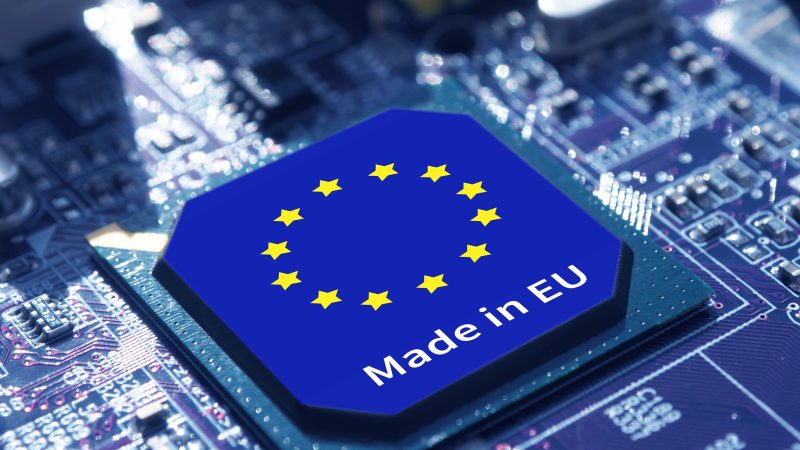EU to Assess Risks of Critical Technologies Being Weaponised
Introduction
In a bid to ensure economic security and protect its values, the European Commission has announced plans to assess the risks associated with critical technologies being weaponised. These technologies include semiconductors, artificial intelligence (AI), quantum technologies, and biotechnologies such as vaccines and genome sequencing. This move by the European Union (EU) echoes similar measures taken by other countries, including the United States and Australia, in response to China’s increasing assertive role in the tech industry. The EU aims to mitigate these risks through measures such as export controls and collaborations with like-minded allies.
Assessing Risks and Taking Action
The European Commission, in collaboration with its member states, will conduct risk assessments for the four critical technologies mentioned above. These assessments are expected to be completed by the end of the year. The next step for the EU is to take measures to mitigate these risks in the following year. These measures could include export controls, which would restrict the transfer of critical technologies to countries not aligned with EU values. Additionally, the EU may seek partnerships and collaborations with like-minded allies to address these challenges collectively.
Commission Vice President Vera Jourova and EU industry chief Thierry Breton will hold a press conference to discuss these issues further. The EU’s economic security strategy, announced in June, aims to reduce the bloc’s dependence on certain countries for key products. This strategy was prompted by supply chain disruptions caused by the COVID-19 pandemic and geopolitical tensions.
The Significance of Semiconductors
Semiconductors play a crucial role in various industries, including telecommunications, automotive, and consumer electronics. These tiny electronic components are the foundation of modern technology, powering everything from smartphones to self-driving cars. However, their widespread use also makes them susceptible to potential weaponisation.
By assessing the risks associated with semiconductors being weaponised, the EU aims to safeguard its technological infrastructure and prevent potential disruptions. Export controls on semiconductors could help prevent their transfer to countries that may misuse them for malicious purposes. This move aligns with the efforts of other countries, such as the United States, to protect their critical technologies.
Artificial Intelligence and Its Risks
Artificial intelligence (AI) is another critical technology that the EU intends to assess for potential weaponisation risks. AI has transformative potential across various sectors, including healthcare, finance, and transportation. However, its misuse or manipulation can have severe consequences, ranging from privacy breaches to autonomous weapon systems.
The EU’s initiative to assess the risks of AI being weaponised reflects a growing global concern about the ethical implications of this technology. By identifying and mitigating these risks, the EU aims to ensure the responsible and safe development and use of AI.
Exploring Quantum Technologies
Quantum technologies, with their ability to harness the principles of quantum mechanics, have the potential to revolutionize computing, communication, and cryptography. However, the unique properties of quantum systems also make them vulnerable to exploitation.
The EU’s evaluation of the risks associated with quantum technologies being weaponised highlights the importance of protecting sensitive information and preventing potential breaches. Export controls and collaborations with like-minded allies can play a crucial role in safeguarding these technologies and preventing their misuse.
Biotechnologies: Vaccines and Genome Sequencing
Biotechnologies, specifically vaccines and genome sequencing, are significant areas of focus for the EU’s risk assessment. The COVID-19 pandemic has underscored the importance of vaccine development and distribution, as well as the vulnerability of global health systems. The EU aims to ensure that these critical biotechnologies are not misused or weaponised for nefarious purposes.
Additionally, genome sequencing plays a vital role in medical research and personalized medicine. However, the misuse of genomic data can lead to privacy breaches and discrimination. The EU’s assessment of the risks associated with biotechnologies aims to protect individuals’ genetic information and prevent potential harm.
Export Controls and Collaborations
To mitigate the risks identified through the assessment process, the EU may implement export controls on critical technologies. Export controls restrict the transfer of specific goods, technologies, or information to specific destinations, ensuring they are not misused or weaponised. By imposing export controls, the EU can prevent critical technologies from falling into the wrong hands.
Collaborations with like-minded allies are also an essential part of the EU’s strategy to address the risks of critical technologies being weaponised. By working together with countries that share similar values and concerns, the EU can collectively strengthen its efforts to protect its technological infrastructure and maintain economic security.
Conclusion
The EU’s decision to assess the risks of critical technologies being weaponised demonstrates its commitment to economic security and protecting its values. By evaluating the potential risks associated with semiconductors, artificial intelligence, quantum technologies, and biotechnologies, the EU aims to mitigate these risks through export controls and collaborations with like-minded allies. These measures will help ensure the responsible development and use of critical technologies while safeguarding against potential misuse.
As technology continues to advance, it is crucial for governments and international organizations to remain vigilant and proactive in addressing the risks and potential weaponisation of critical technologies. The EU’s initiative serves as a significant step towards maintaining a safe and secure technological landscape that aligns with its values and economic interests.




